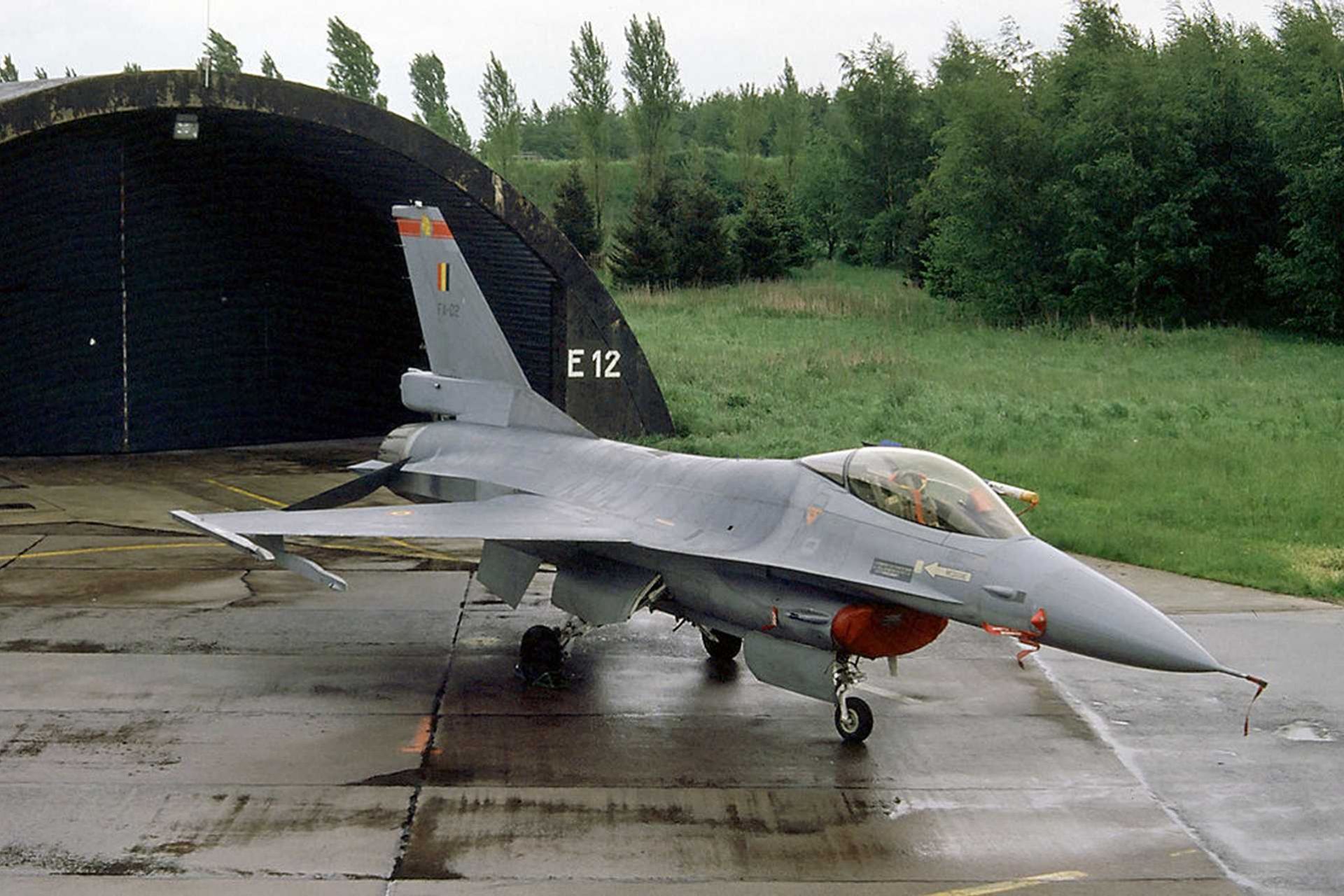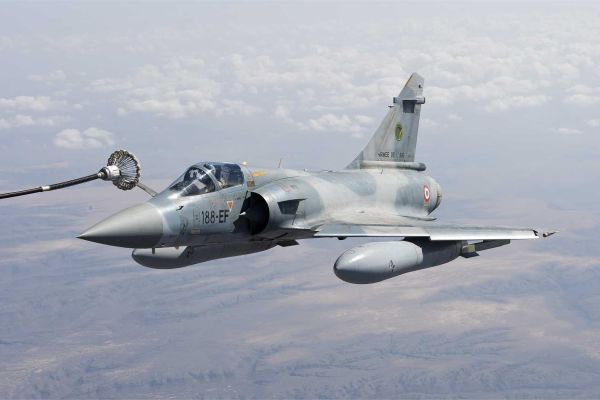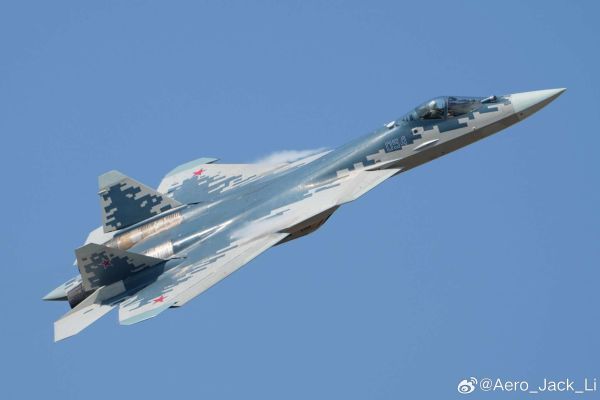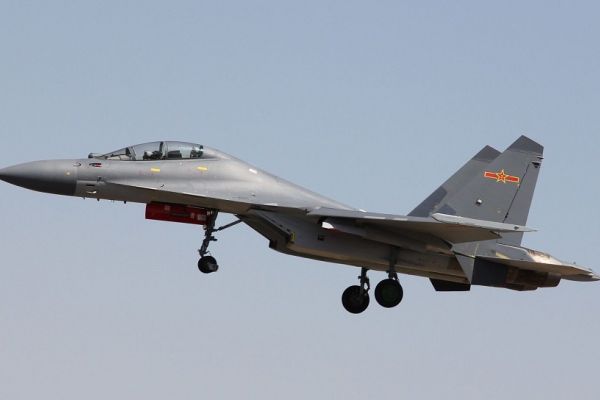Fighter.
F-16A/B Fighting Falcon.

The F-16A/B Fighting Falcon is a lightweight, single-engine, multirole fighter aircraft developed by General Dynamics (now Lockheed Martin) for the United States Air Force (USAF). The F-16A is the single-seat variant, and the F-16B is the tandem two-seat trainer version. Originally designed as an air superiority fighter, the F-16A/B has evolved into one of the most versatile and widely deployed aircraft in the world.
Country users: Bahrain, Belgium, Chile, Denmark, Egypt, Greece, Indonesia, Israel, Italy, Jordan, Morocco, Netherlands, Norway, Oman, Pakistan, Portugal, Singapore, South Korea, Taiwan, Thailand, Turkey, United Arab Emirates, United States.
Description
The F-16A/B was developed in the United States by General Dynamics, with the goal of creating a lightweight, cost-effective fighter with advanced performance and multirole capabilities. Development began in the early 1970s, culminating in the F-16A entering service in 1978 and the F-16B following in 1980. These initial production variants included several block configurations: Block 1, 5, 10, 15, and 20.
Among these, the Block 15 represented the first major change to the F-16 design, introducing larger horizontal stabilizers to enhance maneuverability and stability. The Block 15 variant is the most numerous of all F-16 configurations, with 983 aircraft produced. Many earlier F-16A/B models were subsequently upgraded to enhance their operational capabilities. For example, around 300 earlier USAF F-16A/B aircraft were modified to the Block 15 Mid-Life Update (MLU) standard, giving them capabilities comparable to the F-16C/D Block 50/52 aircraft. Another major upgrade involved 214 Block 15 aircraft, which received the Operational Capability Upgrade (OCU), enhancing their engines, structural integrity, and avionics.
A specialized version of the Block 15, known as the Air Defense Fighter (ADF), was introduced between 1989 and 1992 to meet the requirements of Cold War air defense. 271 Block 15OCU airframes were converted into the ADF configuration at the Ogden Air Logistics Center. These upgrades included an improved Identification Friend or Foe (IFF) system, enhanced radios, radar modifications, the ability to carry beyond-visual-range missiles, and a side-mounted 150,000-candlepower spotlight for visual identification of intruders at night. Originally intended to defend U.S. airspace during the Cold War, the ADF variant lost its strategic role following the fall of the Berlin Wall in 1989. By 1994, most ADF aircraft were mothballed. However, some were later exported or leased: 12 F-16A and 4 F-16B ADFs went to Jordan, 15 F-16A and 1 F-16B ADFs to Thailand, and 30 F-16A and 4 F-16B ADFs were leased to Italy between 2003 and 2012.
These variants allowed the F-16A/B to evolve beyond its initial air superiority role, becoming a highly adaptable platform for air-to-air, air-to-ground, and specialized missions. Today, the F-16A/B is primarily used for training, counter-insurgency, and light combat operations, while retaining its legacy as a foundational model in the F-16 family.
F-16 A/B variants:
- F-16A: The original single-seat production variant of the Fighting Falcon. Designed primarily for air superiority missions, the F-16A was also capable of ground-attack roles. It featured advanced avionics for its time, a lightweight design, and excellent maneuverability, making it a highly effective combat aircraft. This variant served with the U.S. Air Force and numerous allied air forces worldwide.
- F-16B: The tandem two-seat trainer variant of the F-16A. While designed for pilot training, the F-16B maintained the combat capabilities of the F-16A. It included an additional seat for an instructor or weapons systems officer and was widely used for training purposes by many air forces.
- F-16A Block 1: The first production model, introduced in the late 1970s. This variant featured basic avionics and a simple airframe configuration. It was primarily used for initial evaluations, training, and early operational deployments.
- F-16A Block 5: An improved version of the Block 1 with minor avionics upgrades and design refinements for enhanced reliability and operational efficiency. Introduced in 1980, it served with the U.S. Air Force and other early adopters of the F-16.
- F-16A Block 10: This variant brought further improvements to avionics and radar systems, enhancing both air-to-air and air-to-ground mission capabilities. It was introduced in the early 1980s and became a more standardized model in the U.S. Air Force inventory.
- F-16A Block 15: The first significant redesign of the F-16A, featuring larger horizontal stabilizers for improved flight stability and control. Block 15 also included avionics and weapons system enhancements, making it more versatile for multirole operations. It was the most produced F-16 variant, with 983 aircraft built.
- Block 15 MLU (Mid-Life Update): Many Block 15 aircraft were upgraded under the Mid-Life Update program to bring their capabilities in line with the later - F-16C/D Block 50/52 models. These upgrades included advanced radar, avionics, and compatibility with modern weapons systems.
- F-16A Block 15 OCU (Operational Capability Upgrade): A further enhancement of Block 15 aircraft, including engine upgrades, structural reinforcements, and avionics improvements. This variant extended the operational lifespan of Block 15 models.
- F-16A Block 15 ADF (Air Defense Fighter): A specialized air defense version of the Block 15 OCU, developed for Cold War-era air defense missions. This variant featured upgraded radar, IFF (Identification Friend or Foe) systems, and the ability to carry advanced air-to-air missiles like the AIM-7 Sparrow and AIM-120 AMRAAM. It also included a side-mounted spotlight for night identification of targets. After the Cold War, many ADF variants were retired or sold to other nations, including Jordan, Thailand, and Italy.
- F-16B Block 15: The two-seat trainer version of the Block 15, featuring the same enhanced capabilities as the single-seat F-16A Block 15. It provided advanced training while retaining full combat functionality, making it a versatile addition to F-16 fleets.
- F-16A/B Block 20: A further improved version of the F-16A/B with advanced avionics, radar upgrades, and enhanced operational capabilities. The Block 20 variant was produced for countries seeking to modernize their F-16 fleets and maintain operational relevance in multirole missions.
Technical Data
-
Design
The F-16A/B features a low-wing, tailless delta design, prioritizing maneuverability and high-speed performance. Its aerodynamic airframe, combined with a frameless bubble canopy, provides superior visibility and situational awareness. The F-16A is a single-seat variant, while the F-16B incorporates a second tandem seat for training purposes. Both versions share a similar airframe, with minor differences to accommodate the instructor in the F-16B.
The aircraft measures 15.06 meters (49.4 feet) in length, with a wingspan of 9.45 meters (31 feet) and a height of 4.88 meters (16 feet). It has an empty weight of 8,570 kg (18,870 lbs) and a maximum takeoff weight of 19,187 kg (42,000 lbs).
-
Armament
The F-16A/B is equipped with a wide range of weapons, providing versatility in both air-to-air and air-to-ground roles. The aircraft has six hardpoints for external stores, with additional under-fuselage and wing pylons to mount weapons or fuel tanks.
- Air-to-Air Missiles: These include the AIM-9 Sidewinder, AIM-7 Sparrow, and later the AIM-120 AMRAAM, which enhanced its long-range engagement capabilities.
- Air-to-Ground Missiles: It carries the AGM-65 Maverick for precision strikes and the AGM-88 HARM for targeting enemy radar systems.
- Bombs: The F-16A/B can deliver general-purpose bombs like the MK-80 series, laser-guided munitions like the GBU-12 Paveway II, and cluster munitions.
- Internal Gun: A M61 Vulcan 20mm rotary cannon provides a close-in weapon system for air combat or ground suppression. -
Engine
The F-16A/B is powered by the Pratt & Whitney F100-PW-200, an afterburning turbofan capable of delivering 23,830 pounds of thrust. This engine enables the aircraft to achieve speeds of up to Mach 2 (2,124 km/h or 1,320 mph) and perform complex aerial maneuvers with its high thrust-to-weight ratio. Its modular design simplifies maintenance and ensures high availability rates.
-
Avionics and onboard equipment
The F-16A/B is equipped with the Westinghouse AN/APG-66 radar, providing multi-mode functionality for air-to-air and air-to-ground operations. Its avionics include an Inertial Navigation System (INS) for accurate navigation and targeting, while upgrades such as the Operational Capability Upgrade (OCU) introduced more advanced systems for Block 15 variants. The ADF version further enhanced avionics with improved radar, communication systems, and integration of beyond-visual-range weapons.
The cockpit features a frameless bubble canopy for 360-degree visibility, a head-up display (HUD) for critical flight data, and multifunction displays (MFDs) to improve pilot situational awareness. The aircraft also includes basic countermeasure systems, such as chaff and flares, for self-defense.
Specifications
-
Type
Multirole Fighter (Single-seat: F-16A, Two-seat: F-16B)
-
Country users
Bahrain, Belgium, Chile, Denmark, Egypt, Greece, Indonesia, Israel, Italy, Jordan, Morocco, Netherlands, Norway, Oman, Pakistan, Portugal, Singapore, South Korea, Taiwan, Thailand, Turkey, United Arab Emirates, United States.
-
Designer Country
United States (General Dynamics, now Lockheed Martin)
-
Armament
- Air-to-Air Missiles: AIM-9 Sidewinder, AIM-7 Sparrow, AIM-120 AMRAAM
- Air-to-Ground Missiles: AGM-65 Maverick, AGM-88 HARM
- Bombs: MK-80 series general-purpose bombs, GBU-12 Paveway II laser-guided bombs, cluster bombs
- Gun: M61 Vulcan 20mm rotary cannon
Pylons: 6 hardpoints (4 underwing, 1 centerline, 1 fuselage pylon) -
Avionics
- Radar: Westinghouse AN/APG-66 pulse-Doppler radar
- Navigation: Inertial Navigation System (INS)
- Flight Control: Fly-by-wire system
- Targeting and Combat Systems: HUD (Head-Up Display), Multifunction Displays (MFDs)
- Electronic Warfare: Chaff and flare dispensers, Radar Warning Receiver (RWR)
- IFF: Identification Friend or Foe system (ADF variant) -
Weight
Empty Weight: 8,570 kg (18,870 lbs)
Maximum Takeoff Weight (MTOW): 19,187 kg (42,000 lbs) -
Engine
- Engine: Pratt & Whitney F100-PW-200 afterburning turbofan
- Thrust: 23,830 lbf (106 kN) -
Speed
Maximum Speed: Mach 2.0 (2,124 km/h or 1,320 mph)
-
Range
- Combat Radius: 550–800 km (340–500 miles), depending on mission configuration
- Ferry Range: 4,220 km (2,625 miles) -
Dimensions
Length: 15.06 m; Height: 4.88 m; Wingspan: 9.45 m















































